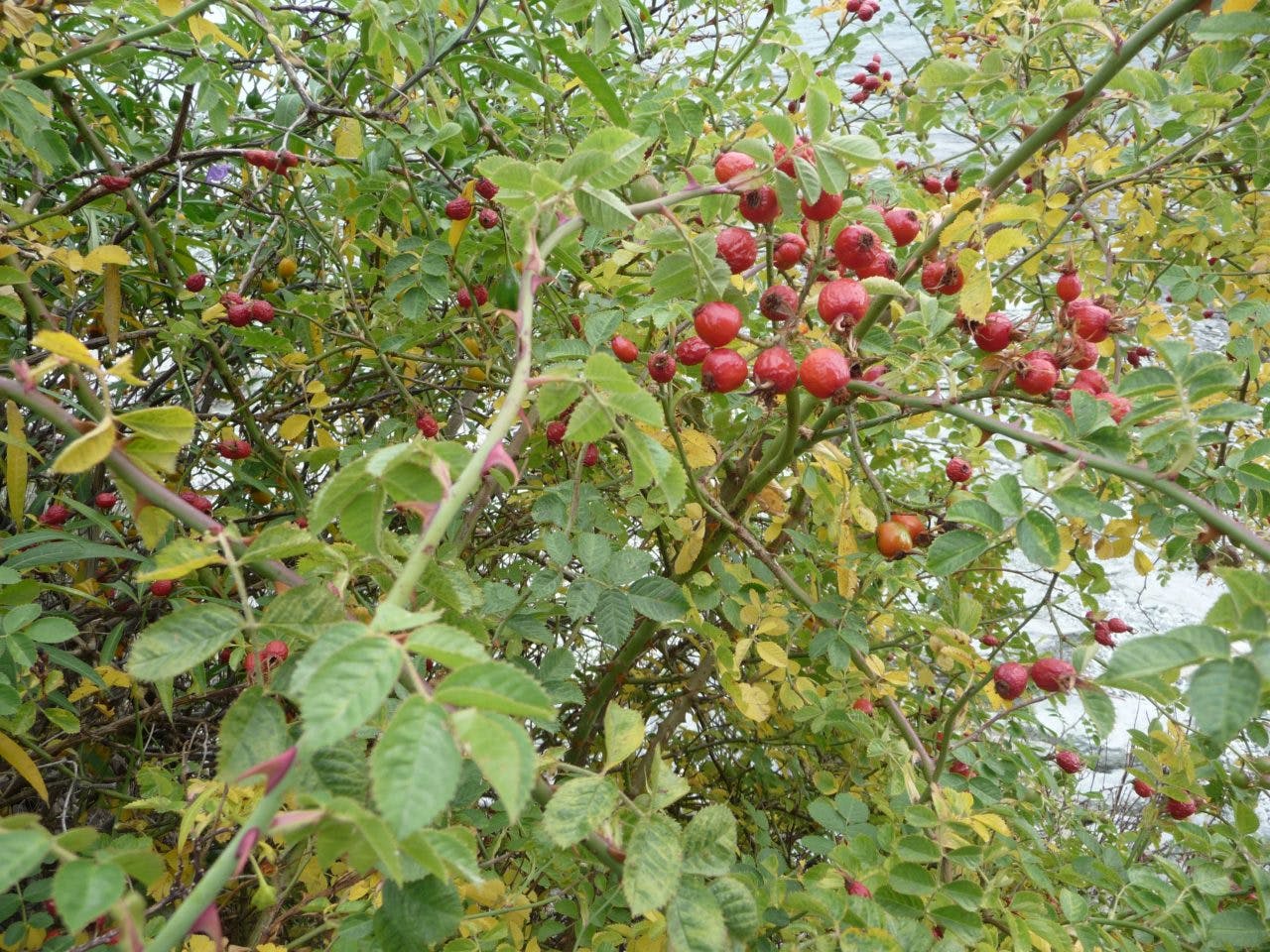Description: Small thorny shrubs growing between 1-3m tall, flowers are white to pink about 5cm in diameter with yellow centres and multiple stamen. They bloom in the spring, and turn to bright red seed pods in the autumn.
Season: Flowers form in the spring with the hips forming in late summer, early autumn and staying until the winter frosts.
Fruit: The hips form when the flowers have been spent. The colour can vary from bright red to black, dependant on the type of plant they come from. They contain multiple seeds covered in small fine hairs.
Leaves: Small and oval, containing 5-7 small serrated edged leaves on one stalk. The underside is usually covered in small fine hairs.
Location: Lowland habitats below 600m. They do need the cold to germinate but will not tolerate continued cold. They commonly form hedgerows and rough grassed areas.
Why eat them? They can be made into jams, jellies, soups and herbal teas. The hips are a great source of Vitamin C and form a great substitute for citrus fruits. They also contain essential fatty acids, antioxidants and small amounts of vitamins A and B. The flower petals also make a great addition to salads.
Unusual tip: Because they are high in ascorbic acid, the hips can only be eaten when cooked or processed using heat. They are also covered in small hairs, which can cause stomach irritation. Gentle cooking will retain the vitamin content and colour of the hips, and cooking in a liquid will allow the small hairs to be passed off.
Pranksters can remove the seeds and dry them in a matchbox to form itching powder.
– Ben Francis







